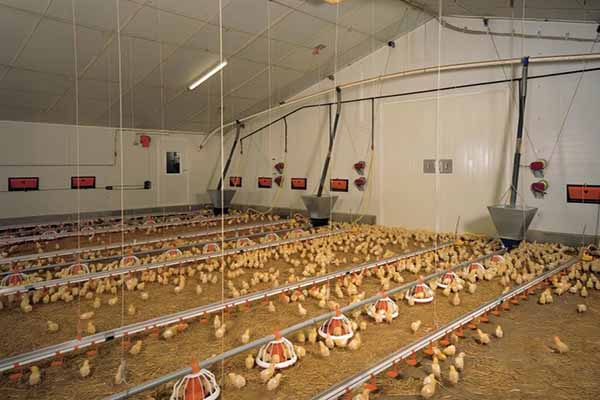Step-by-Step Poultry Farm Setup in Kenya
Time : 2025-06-30
Setting up a poultry farm in Kenya can be a rewarding venture, but it requires careful planning and execution. This comprehensive guide will walk you through the essential steps to establish a successful poultry farm, from initial planning to operational management. Whether you’re a beginner or an experienced farmer, this article will provide you with the knowledge and tools needed to create a sustainable and profitable poultry operation.
Step 1: Market Research and Business Plan
Before diving into the setup, it’s crucial to conduct thorough market research and develop a solid business plan. This will help you understand the demand for poultry products in your area and ensure that your farm can meet that demand.
1.1 Market Research
– Identify Target Market: Determine who your customers will be – restaurants, retailers, or consumers.
– Competitor Analysis: Study local competitors to understand their pricing, product quality, and market share.
– Supply and Demand: Analyze the local supply chain to identify gaps that your farm can fill.
1.2 Business Plan
– Define Your Farm’s Objectives: Outline what you want to achieve in terms of production, sales, and sustainability.
– Financial Projections: Estimate startup costs, ongoing expenses, and potential income.
– Marketing Strategy: Develop strategies to promote your products and reach your target market.
Step 2: Selecting the Right Location
The location of your poultry farm is critical for its success. Consider the following factors:
2.1 Accessibility
– Ensure the farm is easily accessible to suppliers, customers, and for the transportation of birds.
2.2 Land Availability
– Look for land that is suitable for poultry farming, with good drainage and a clean water supply.
2.3 Zoning Regulations
– Check local zoning laws to ensure that poultry farming is permitted in your area.
Step 3: Designing Your Poultry Farm
A well-designed farm layout can optimize productivity and minimize risks.
3.1 Farm Layout
– Brooder House: Design a space for chicks to grow until they are mature enough to move to the free-range area.
– Free-Range Area: Create an enclosed space where birds can roam freely, which can improve their health and quality.
– Feed Storage: Allocate a dry, clean area for storing feed to prevent spoilage.
– Water Supply: Ensure a reliable water supply for drinking and hygiene.
3.2 Equipment Selection
– Brooder Systems: Use advanced brooder systems to control the temperature and humidity for optimal chick development.
– Feeding Systems: Invest in automated feeding systems to ensure consistent nutrition.
– Watering Systems: Install automatic watering systems for easy access to fresh water.
Step 4: Building the Infrastructure
Constructing the necessary infrastructure is the next step. Consider the following:
4.1 Construction Materials
– Use durable materials that are resistant to weather and pests.
4.2 Building Codes
– Adhere to local building codes and regulations.
4.3 Waste Management
– Plan for proper waste management to prevent disease and maintain environmental standards.
Step 5: Purchasing Birds
Selecting the right breed and buying healthy chicks is crucial for your farm’s success.
5.1 Breed Selection
– Research different poultry breeds to find the ones that are best suited to your climate and market.
5.2 Purchasing Chicks
– Buy chicks from a reputable supplier who can provide health guarantees and advice on care.
Step 6: Managing Your Poultry
Effective management is key to a successful poultry farm.
6.1 Feeding and Watering
– Provide a balanced diet and ensure access to clean water at all times.
6.2 Health Management
– Implement a biosecurity plan to prevent disease and regularly check birds for signs of illness.
6.3 Egg Collection
– Collect eggs regularly to maintain freshness and quality.
Step 7: Marketing and Sales
Develop a marketing strategy to ensure your products reach your target market.
7.1 Branding
– Create a strong brand identity that resonates with your customers.
7.2 Distribution Channels
– Establish partnerships with retailers or restaurants and consider direct-to-consumer sales.
7.3 Promotions
– Use social media and local advertising to promote your products.
Conclusion
Setting up a poultry farm in Kenya is a multifaceted process that requires careful planning and execution. By following these step-by-step guidelines, you can create a successful and sustainable poultry operation. Remember to stay informed about the latest advancements in poultry farming technology and management practices to keep your farm competitive and profitable.
Tags












